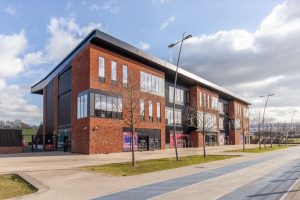66,000 new homes for Leeds in 16-year building programme

DEVELOPMENT plans for 66,300 homes across Leeds have been announced as part of a 16-year house-building programme.
The proposals by Leeds City Council allocate sites for 35,600 new homes, which add to sites for 30,700 homes that have already been identified. Of those, about 3,000 have been built since March 2012 – when the plans began to be formed – while the rest have planning permission.
Overall, the Council has identified 763 sites across the city, of which 62% are on brownfield land, 18% on greenfield, 20% on green belt and 2% on mixed use land.
- Where the homes will be built: see the area breakdown
- See the large map of the Site Allocations Plan
The housing plan is supported by employment plans that include an identified requirement for 1,000,000 sq m of floorspace – of which 840,000 sq m already has planning permission – and retail plans to support the existing centres across the city.
Cllr Peter Gruen, Leeds City Council’s executive member for neighbourhoods, planning and personnel, described the plans as “ambitious” and believes the blueprint will provide the city with “the right homes in the right places”.
He said: “Providing 66,000 new homes is a challenging ambition but one in line with the city’s aim to be the best in the UK.
“People will be interested to see how much is being proposed in their area, but I would say we have tried to be fair across the city, with a clear policy on brownfield sites being used first and bringing back into use existing empty buildings in order to help protect the green belt. People should also look at what we are protecting and excluding from development.”
The plans will be discussed at the Council’s development plan panel next week, following which officers will produce a report that will go out to public consultation later this year.
They are complemented by plans to increase the total amount of green belt land by reclassifying areas in north-east Leeds.
The proposals see the city split into 11 geographical housing areas although there is wide variance in how many houses are planned for each location.
It ranges from 1,800 in Outer North West Leeds, which incorporates Bramhope, Pool-in-Wharfedale and Otley, to 11,500 in the Inner Area, which includes Armley, Seacroft, Beeston Hill and Hunslet.
Phil Crabtree, the chief planning officer for Leeds City Council, said: “The most important thing is Leeds is taking an overall approach for the city. It’s providing houses to the existing population but also our future needs. The population is expected to grow and also the structure will change, like more single-person households for both young people and older people.”
Detailing the sites available for housing will enable the Council to balance the demands of the city with the desires of the housebuilders.
Cllr Gruen described the target of 66,000 new homes by 2028 as being “originally less than the housebuilders wanted and more than some communities wanted” but asserted that the city-wide site allocations plan means there will be an agreed plan that planning applications can be measured against.
Cllr Neil Walshaw, chairman of Leeds City Council’s development plan panel, said: “The whole process of the plan is deciding how, what, where and when. That’s better decided at a city council level than it being developer-led. We do have the city’s best interests at heart, however perfect or imperfect.”
He added: “Around all of the areas of possible development, the council has been working with infrastructure and service providers such as schools, health services and transport planners to ensure growth would be manageable and sustainable as that is essential in successfully introducing and accommodating any new housing.”







